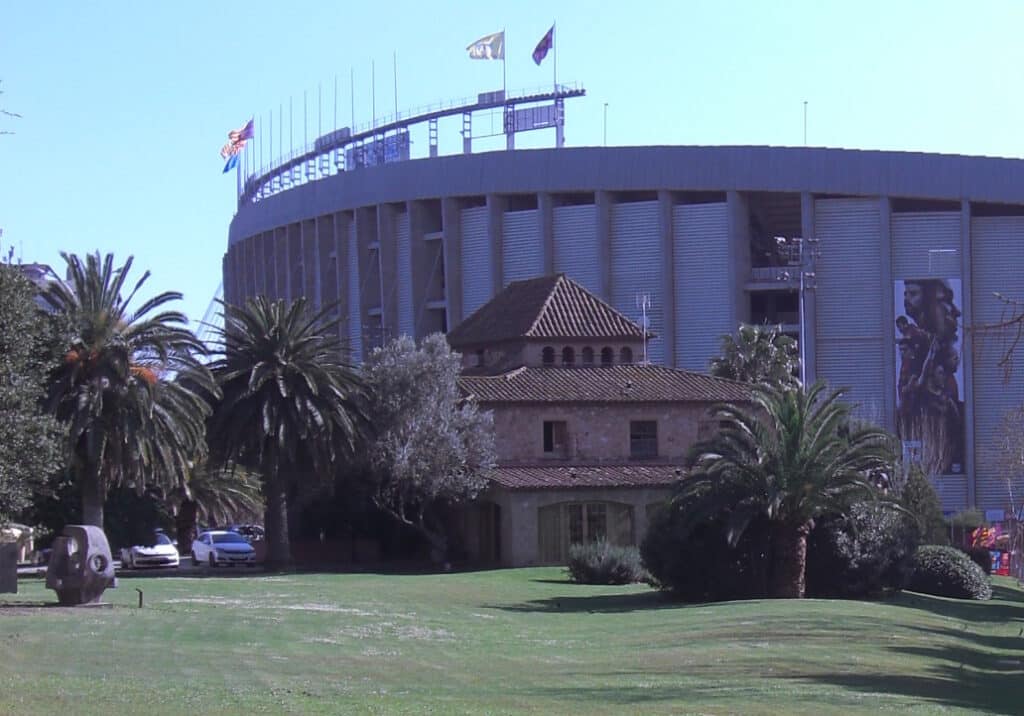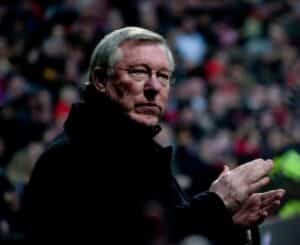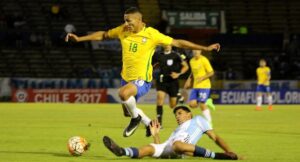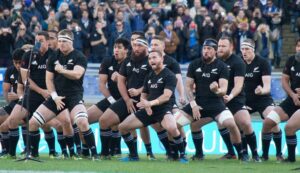Image by Wikimedia Commons CC0 1.0
In an era increasingly monopolised by mammoth transfer fees, eye-watering financial deals and hyper-aggressive recruitment, football has lost some of its soul and much of its meaning.
However, plenty of romance remains in academy systems, where homegrown starlets with rough edges are honed into the superstars of tomorrow.
Indeed, football academies are the lifeblood of the beautiful game and the best ones have been pumping world-class talent into the global bloodstream for decades.
Below, we’ve presented our rundown of the five best football academies in football — the real cathedrals of footballing education and the game’s most prolific production lines.
5. La Escuela de Fútbol River Plate (River Plate, Argentina)
Argentina has long been one of football’s most fertile breeding grounds for top-class footballers and Buenos Aires giants River Plate have always been at the epicentre of production in the region.
All-time Real Madrid and post-war great Alfredo Di Stefano is perhaps the River academy’s most famous graduate, however, the Blond Arrow is just one of a multitude of stars that were schooled at La Escuela de Fútbol River Plate.
From Angel Labruna, Claudio Caniggia, Hernan Crespo and Ariel Ortega to Javier Mascherano, Omar Sivori, Gonzalo Higuain and Pablo Aimar, the list of River Plate academy products reads like a who’s who of Argentinean legends.
The Rive academy, known as “La Fabrica” continues to churn out the world-beaters of tomorrow with Atletico Madrid’s Julian Alvarez, Chelsea’s Enzo Fernandez and new Real Madrid prodigy Franco Mastantuono currently flying the flag in Europe’s major leagues.
4. Sporting CP Academy (Portugal)
Sporting CP set the benchmark for player production in Portugal and the club’s famed academy in Alchochete has become synonymous with pumping out elite-level graduates, especially when it comes to technically gifted and tactically sharp footballers.
Cristiano Ronaldo is undoubtedly the most high-profile Sporting CP academy alumni; however, the former Real Madrid superstar isn’t the only stellar name to roll off the conveyor belt in Lisbon.
Sporting’s edge lies in its ability to blend Portuguese flair with a streetwise competitiveness. Players are taught to be warriors and artists in equal measure — no easy task, but one the club has perfected over decades.
Luis Figo, Joao Moutinho, Ricardo Quaresma, Nani and Rui Patricio all learned their trade within Sporting’s system and more recently, modern stars like Geovany Quenda, Nuno Mendes and Rafael Leao followed the same path.
Sporting CP’s importance to Portuguese football cannot be overstated. In 2016, eight of the players who started Portugal’s European Championship final win over France came through the ranks at Sporting, with a further two graduates making appearances off the bench.
Portugal has been installed as underdogs on the best online football betting sites ahead of their climactic clash with Les Bleus, but with Sporting CP’s influence key, they managed to secure the first piece of major silverware in their history.
3. The Cliff/Carrington (Manchester United, England)
Manchester United’s commitment to youth development has been unwavering for close to a century. In fact, every matchday squad the club has named since 1937 has contained at least one academy graduate, a sequence that spans more than 4,000 successive fixtures.
From Sir Matt Busby’s Babes to Sir Alex Ferguson’s Class of 92, the most successful eras in Man Utd’s history have been heavily influenced by the club’s unyielding faith in youth.
Iconic players like Duncan Edwards, Dennis Viollet, Stan Pearson, George Best, Bobby Charlton, Nobby Stiles, Bill Foulkes, Roger Byrne, Shay Brennan and Jackie Blanchflower were standard bearers of the mid-20th century.
Later, cult heroes like Mark Hughes, Norman Whiteside, Mike Duxbury, Sammy McIlroy continued the drip feed of new blood through the 1970s and 80s, though Alex Ferguson’s arrival in 1986 would kick production levels up a notch.
Ryan Giggs’s emergence in the early 90s opened the doors and David Beckham, Paul Scholes, Nicky Butt, Gary Neville and Philip Neville would follow through, to win hundreds of caps and dozens of trophies between them.
More recently, academy jewels like Wes Brown, John O’Shea, Danny Welbeck, Darren Fletcher, Jonny Evans, Marcus Rashford, Scott McTominay, Anthony Elanga, Paul Pogba, Mason Greenwood, Alejandro Garnacho, Kobbie Mainoo have maintained the traditions, with new names breaking through all the time.
2. Ajax Youth Academyk, De Toekomst (Ajax, Netherlands)
“De Toekomst” — which translates as “The Future” — might be the most fitting name ever given to a football training ground. Indeed, at Ajax, the future has always mattered more than the present.
Few clubs on the planet can claim to have made a greater contribution to football’s tactical and technical evolution than Ajax. The club’s system is stunningly efficient and has been producing some of the game’s best players since the 1960s.
Players schooled in Amsterdam are generally guaranteed to have excellent pedigree, which is why Europe’s richest clubs spend so much time shopping on the banks of the river Amstel.
Delving into the catalogue of former Ajax academy graduates is akin to diving head first into a rundown of global football’s greatest ever players as a whole.
From the Totaalvoetbal (Total Football) advocates of the 1960s and 70s like Cruyff, Piet Keizer, Johnny Rep, Sjaak Swart Wim Suurbier and Ruud Krol to the dominant sides of the 1990s with Edwin van der Sar, Frank Rijkaard, Clarence Seedorf, Edgar Davids, Danny Blind, Patrick Kluivert, Frank de Boer and Ronald de Boer, Ajax have been consistently prolific.
Household names like Marco van Basten and Dennis Bergkamp could also be thrown in for good measure, while Wesley Sneijder, Rafael van der Vaart, Christian Eriksen, Toby Alderweireld, Frenkie De Jong, Matthijs de Ligt and Jurrien Timber have been keeping the torch lit in Amsterdam in more recent times.
Financial pressures mean that selling players continues to be a major part of the Ajax model, but the fountain never seems to run dry.
1. La Masia (FC Barcelona, Spain)
Barcelona’s fabled youth academy reached celestial status relatively recently, especially when compared to some of the other clubs on this list, however, Barca’s unparalleled player production record over the last 20 years or so has earned them the number one spot on our rankings.
From around 2005 onwards, Barcelona’s academy really kicked into overdrive when Pep Guardiola’s golden generation swept all before them.
Headlined by the most famous La Masia prospect of them all, Lionel Messi, Barcelona built an all-conquering side with Guardiola at the helm that contained fellow academy graduates Andres Iniesta, Xavi Hernandez, Sergio Busquets, Carles Puyol, Pedro, Cesc Fabregas, Jordi Alba, Victor Valdes and Gerard Pique.
The same players also formed the crux of the hugely successful Spanish national team that won successful tournaments at Euro 2008, World Cup 2010 and Euro 2012.
What makes La Masia so singularly special is its commitment to identity. The philosophy isn’t just taught — it’s tattooed on the soul. From U8s to the first team, players are immersed in the tiki-taka ideology, learning to play with their heads up, their hearts open, and their boots never too far from the ball.
The current generation of La Masia students currently strutting their stuff for current La Liga champions Barcelona include Pau Cubarsi, Alejandro Balde, Gavi, Fermin Lopez, Marc Casado, Dani Olmo and of course, golden boy, Lamine Yamal.




